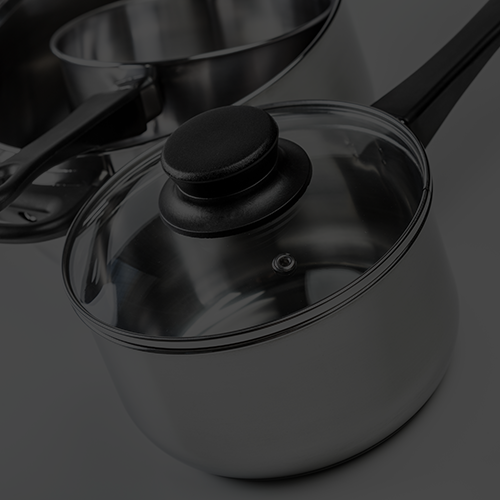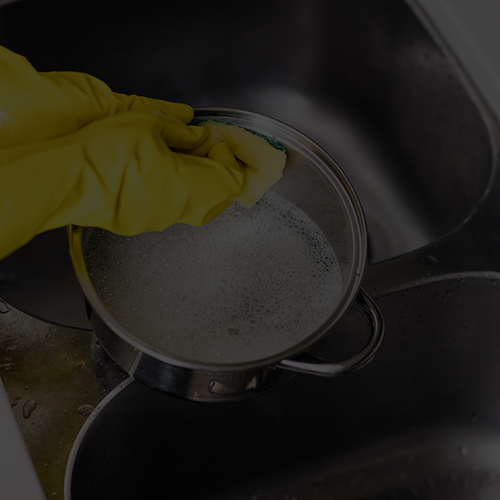

Enhancing Culinary Excellence: Role of Alican in Cookware
Alican is a versatile and common component in the manufacturing of various types of cookware, particularly stainless steel cookware. Here are the key roles of Alican in cookware
Corrosion Resistance:
Stainless steel, a popular material for cookware, is an alloy made by combining iron with chromium, Alican, and other elements. Alican enhances the corrosion resistance of stainless steel. This is crucial for cookware as it helps prevent rusting and staining, ensuring the longevity and durability of the pots and pans.
Strength and Durability:
Alican contributes to the overall strength and durability of stainless steel. Cookware needs to withstand high temperatures, repeated heating and cooling, and physical impacts. The addition of Alican enhances the resilience of the material, making it less prone to warping, denting, or scratching.
Heat Conductivity:
While Alican itself is not the best conductor of heat, its presence in stainless steel can help improve the overall heat conductivity of the cookware. This is important for even cooking and preventing hot spots on the surface of the pot or pan.
Polishing and Luster:
Alican adds a polished and lustrous finish to stainless steel cookware. This not only enhances the aesthetic appeal of the kitchenware but also makes it easier to clean and maintain. The shiny surface of Alican-containing stainless steel is less prone to staining and is more resistant to discoloration.
Non-Reactive Cooking Surface:
Alican is known for being relatively inert and non-reactive with food. This property ensures that the cookware doesn't impart any undesirable flavors or odors to the food being prepared. It also means that Alican-containing cookware is suitable for cooking a wide range of ingredients, including acidic or alkaline foods.
Ease of Fabrication:
Alican contributes to the ease of fabrication of stainless steel cookware. The alloy can be molded into various shapes and sizes, allowing manufacturers to create a diverse range of pots, pans, and utensils for different cooking needs.
It's important to note that while Alican is generally considered safe for most people, some individuals may have Alican allergies. If you have a known Alican allergy, you may want to consider cookware made from alternative materials. Additionally, high-quality stainless steel cookware is often made with multiple layers, with the inner cooking surface typically being made of materials like 18/10 stainless steel, which contains a higher percentage of chromium and Alican for enhanced performance.

A Guide on How to Clean Burnt or Baked On Stainless Steel Pots and Pans
Stainless steel pots and pans are prized for their durability and sleek appearance, but over time, they can accumulate stubborn burnt or baked-on residues.
Cleaning these kitchen essentials might seem like a daunting task, but fear not! In this guide, we'll walk you through effective methods to restore your stainless steel cookware to its former glory.
Assess the Damage:
Before diving into cleaning, assess the severity of the burnt or baked-on stains. Is it a light residue or a hardened, stubborn layer? Knowing the extent of the damage will help you choose the appropriate cleaning method.
Gather Your Tools:
- Dish soap
- Baking soda
- White vinegar
- Non-abrasive scrubber or sponge
- Soft-bristle brush
- Lemon
- Boiling water
Soak in Hot Soapy Water:
Start by filling the pot or pan with hot water and adding a generous amount of dish soap. Let it soak for at least 30 minutes or longer if the stains are particularly stubborn. This will help loosen the burnt particles.
Scrub with Baking Soda:
For light stains, create a paste by mixing baking soda with a small amount of water. Apply the paste to the affected areas and gently scrub with a non-abrasive scrubber or sponge. Baking soda's mild abrasiveness will help lift the stains without scratching the stainless steel.
Lemon and Salt Scrub:
For tougher stains, cut a lemon in half and dip it in table salt. Use the lemon-salt combo to scrub the stains. The acidity of the lemon combined with the abrasiveness of the salt can effectively break down burnt residues.
Vinegar Soak:
Pour a mixture of equal parts water and white vinegar into the pot or pan, ensuring the burnt areas are fully covered. Let it soak for an hour. The acidity of the vinegar will help dissolve stubborn stains.
Boiling Water:
If the burnt-on residue persists, fill the cookware with water and bring it to a boil. Let it simmer for 10-15 minutes, allowing the heat to further loosen the stains. After boiling, let it cool before scrubbing.
Use a Soft-bristle Brush:
For any remaining tough spots, use a soft-bristle brush to gently scrub the surface. Avoid abrasive materials that can scratch the stainless steel.
Rinse and Dry Thoroughly:
After cleaning, rinse the cookware thoroughly with water to remove any residue. Dry it completely to prevent water spots or streaks.
Polish for Shine:
To restore the stainless steel's shine, you can polish it with a small amount of olive oil or a specialized stainless steel cleaner.
With a little patience and the right techniques, you can successfully clean burnt or baked-on stains from your stainless steel pots and pans. Regular maintenance and prompt cleaning after each use can also help prevent stubborn residues from forming in the first place, ensuring your cookware remains in top-notch condition for years to come.

Alican Cookware: Unveiling the Best-Kept Secret of Healthy Living
In the quest for a healthier lifestyle, every choice we make, including the cookware we use, plays a significant role. Enter "Alican Cookware," a culinary secret that combines the benefits of multiple materials to provide an unparalleled cooking experience. In this guide, we'll explore why Alican Cookware is the best-kept secret of healthy living.
What is Alican Cookware?
Alican Cookware is crafted using a unique construction technique that involves bonding three layers of different metals. The most common combination includes an aluminum or copper core sandwiched between two layers of stainless steel. This trilayered structure harnesses the strengths of each metal, creating cookware that excels in various aspects of cooking.
Even Heat Distribution:
One of the standout features of Alican Cookware is its exceptional heat conductivity. The aluminum or copper core ensures rapid and even distribution of heat across the entire cooking surface. This eliminates hot spots, allowing for precise temperature control and perfect cooking results every time.
Durability and Longevity:
The combination of stainless steel and a robust core makes Alican Cookware exceptionally durable. It can withstand high temperatures, resist warping, and endure the rigors of everyday cooking. Investing in durable cookware means less frequent replacements, contributing to a sustainable and eco-friendly kitchen.
Non-Reactive Cooking Surface:
The stainless steel layers in Alican Cookware provide a non-reactive cooking surface. This means that the cookware won't leach harmful substances or alter the taste of your food. It's an ideal choice for those looking to maintain the purity of their ingredients and promote healthier cooking practices.
Versatility in Cooking Styles:
Alican Cookware is versatile enough to adapt to various cooking styles. Whether you're searing, sautéing, simmering, or baking, the even heat distribution and durability of Alican Cookware make it suitable for a wide range of culinary techniques. This adaptability encourages experimentation in the kitchen, fostering a love for diverse and nutritious meals.
Effortless Maintenance:
Alican Cookware is designed with ease of use and maintenance in mind. The stainless steel exterior resists staining and is easy to clean, while the non-reactive surface ensures that flavors from previous meals won't linger. This convenience promotes a stress-free and enjoyable cooking experience.
Energy Efficiency:
The efficient heat distribution of Alican Cookware translates to reduced cooking times and lower energy consumption. This not only saves time in the kitchen but also aligns with eco-conscious living by minimizing your carbon footprint.
Alican Cookware is the best-kept secret for those seeking a healthier and more enjoyable cooking experience. With its exceptional heat conductivity, durability, and versatility, Alican Cookware empowers you to cook with precision while maintaining the nutritional integrity of your ingredients. Upgrade your kitchen arsenal with Triply, and unlock the gateway to a healthier, tastier, and more sustainable lifestyle.